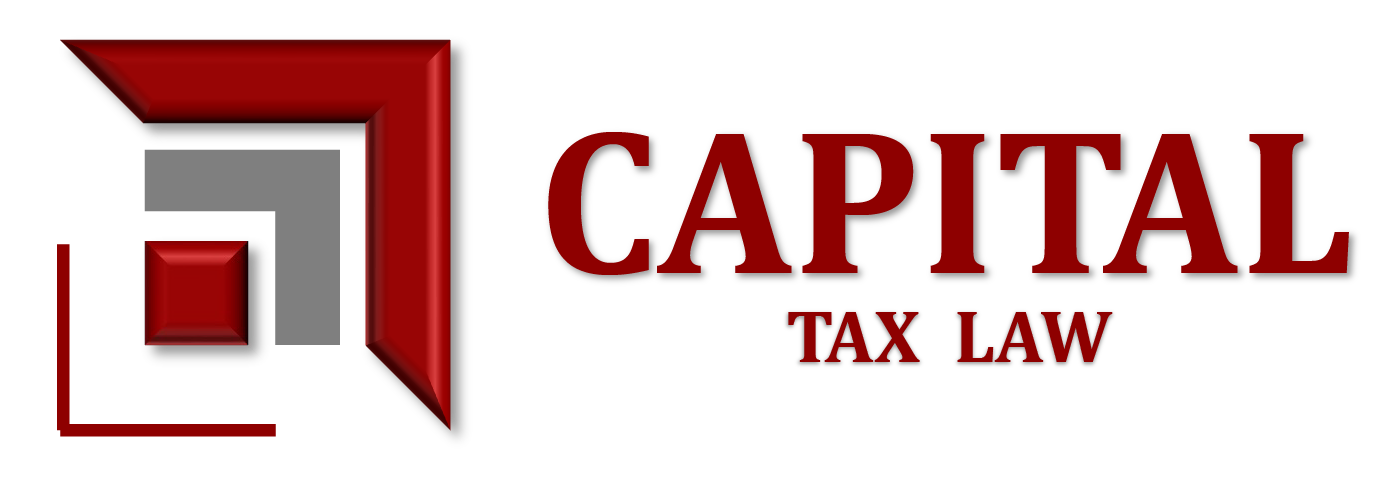
CRA and Your Money: A Shareholder Loan Balancing Act
Shareholder loans are a common way for closely-held corporations to provide financial flexibility to their owners. But like a tightrope walk, it requires careful steps to avoid a costly tax tumble. This guide equips you with the knowledge to navigate shareholder loans in Canada, keeping the CRA happy and your wallet full.
What are Shareholder Loans?
A shareholder loan is a financial transaction between a corporation and its shareholder(s). It essentially allows either the corporation to lend money to a shareholder or a shareholder to loan money to the corporation. While it offers flexibility, careful planning and adherence to tax rules are crucial to avoid tax headaches.
Understanding the Two Types of Shareholder Loans
- Corporation Lending to Shareholders: This is the more common scenario. The corporation acts like a bank, providing a loan to its owner(s). This can be useful for shareholders who need funds for personal or investment purposes.
- Shareholder Lending to the Corporation: Shareholders might inject their own capital into the corporation through a loan. This can be helpful for young companies that may not yet qualify for traditional bank loans or need additional working capital.
Taxation Tightrope: When Loans Turn into Income
The taxman has a rule (Section 15(2) of the ITA) that can turn your loan into income. Here’s how to avoid the trap:
- Repay on Time – The One Year Rule: Settle the loan within one year from the corporation’s year-end. This means that the loan taken from a corporation in a particular year can be repaid before the next year ending for the corporation.
Ex – Imagine the corporation’s year ends on December 31st. A loan taken in June 2024 must be repaid by December 31st, 2025 to avoid taxes.
- Employee Shareholder Exceptions: Loans for specific purposes like buying a work vehicle or company shares might be exempt if you’re also an employee (excluding some positions).
- Loans Between Businesses You Own (Related Corporations): Generally exempt, but proper documentation and interest rates still apply.
The Interest Balancing Act: Avoiding a Tax Bite
Even with proper repayment, failing to charge the prescribed interest rate set by the CRA can trigger a taxable benefit. Think of it as an interest penalty for not following the rules.
The Shareholder Loan Advantage: Deferring Taxes and Saving Money
Used strategically, shareholder loans can be tax-advantageous:
- Deferral of Taxes: Repay the loan within the timeframe, and you effectively delay paying taxes on the borrowed amount.
- Potentially Lower Tax Rates: Borrowing from your corporation at the prescribed rate (often lower than commercial rates) can mean tax savings.
- Financial Flexibility: Need funds for personal or investment goals? Shareholder loans offer an option without immediate tax implications (when following the rules).
Red Flags for the CRA: When Your Loan Triggers an Audit
The CRA keeps a close eye on shareholder loans to prevent tax avoidance. Here’s how to avoid raising red flags:
- Large or Frequent Loans: Borrowing a lot or often can attract scrutiny.
- Missing Paperwork: No loan agreement? That’s a recipe for trouble.
- Interest Rate Shenanigans: Charging too little interest compared to the CRA rate can lead to audits. Charging a 5%-6% interest on the loans may be adequate from CRA’s perspective.
- Late Repayments: Missed deadlines can put you under the CRA microscope.
- Misusing Exceptions: Claiming a loan for a fake home purchase? The CRA might come knocking.
Paper Trail Power: Keeping the CRA Happy
Proper documentation is your shield against a CRA audit:
- Formal Loan Agreement: This spells out the amount borrowed, interest rate, repayment terms, and loan purpose.
- Record Keeping: Keep detailed records of loan agreements, interest payments, repayment receipts, and any loan-related communication.
Practical Guide to Managing Shareholder Loans
DOs
- DO Document Everything: Maintain clear and detailed records of all shareholder loans, including loan agreements, repayment schedules, and the purpose of the loan.
- DO Ensure Repayment: Aim to repay the loan within the required period to avoid inclusion in income.
- DO Consult a Tax Professional: Regularly consult with a tax expert to ensure compliance with the ITA and to structure loans effectively. Call Capital Tax Law NOW or Book a Free Consultation here!
DON’Ts
- DON’T Use Loans for Personal Expenses Without Planning: Avoid using shareholder loans for personal expenses unless you are certain they meet the exceptions under Section 15(2.6).
- DON’T Ignore Documentation: Failure to document loans properly can result in adverse tax consequences during a CRA audit.
- DON’T Assume All Loans Are Exempt: Not all loans qualify for exemptions; understand the specific conditions under Section 15(2.6).
Your Compliance Checklist for Shareholder Loans
- Formal Loan Agreement: Ensure it’s drafted and signed by all parties.
- Interest Payments: Calculate and pay them annually.
- Repayment Schedule: Stick to the plan and repay on time.
- Accurate Reporting: Include all loan details in financial statements and tax returns.
Case Study Examples: Navigating the Audit Risk Landscape
The CRA closely monitors shareholder loans to prevent tax avoidance. Here are key aspects of their audit approach:
- Loan Purpose and Repayment: Auditors will examine the purpose of the loan and whether it was repaid within the required timeframe. Clear documentation demonstrating a legitimate business purpose strengthens your position.
- Documentation: Proper documentation can significantly reduce audit risks. This includes detailed loan agreements, records of repayments, and interest payments. Having a paper trail that supports the transaction is crucial.
- Patterns of Behavior: Frequent loans and repayments, particularly if they seem cyclical or timed closely to the corporation’s year-end, may be scrutinized to determine if they are a means of avoiding taxes. The CRA looks for unusual patterns that could indicate attempts to manipulate the system.
Understanding how the CRA approaches shareholder loans and the potential audit triggers can help you structure your transactions for maximum security. Here are various scenarios with different risk levels:
Low Risk:
- Scenario 1: Repayment within a Year
- Situation: A corporation lends $25,000 to a shareholder on July 1, 2024, for a down payment on a rental property the shareholder plans to acquire. The corporation’s year-end is December 31, 2024.
- Outcome: The shareholder repays the loan in full by June 30, 2025, well within the one-year timeframe.
- Audit Risk: Low. The loan amount is reasonable, the purpose is legitimate (business investment), and repayment is prompt with clear documentation.
- Scenario 2: Shareholder Loan for Employee Shareholder
- Situation: A small corporation loans $10,000 to a shareholder who is also a full-time employee to purchase a work vehicle needed for deliveries. The loan agreement specifies the vehicle will be used 100% for business purposes.
- Outcome: The shareholder uses the loan for the work vehicle and repays it within the year.
- Audit Risk: Low. The shareholder is an employee with a legitimate business need for the vehicle, and the loan amount is reasonable. Proper documentation outlining the employment status and vehicle purpose strengthens the case.
Moderate Risk:
- Scenario 3: Loan for Shareholder’s Child’s Education
- Situation: A corporation loans $50,000 to a shareholder in 2023 to help finance their child’s education. The loan agreement is drafted but repayments are delayed due to unforeseen financial difficulties.
- Outcome: The shareholder eventually repays the loan in full in 2025, but with interest.
- Audit Risk: Moderate. While the loan agreement exists, the purpose (child’s education) isn’t directly related to the corporation’s business. The CRA might question the delay in repayment, but full repayment with interest mitigates some risk.
- Scenario 4: Loan Between Related Corporations
- Situation: A shareholder owns two corporations. Corporation A lends $75,000 to Corporation B in 2024. The loan agreement outlines the interest rate (set at the prescribed CRA rate) and repayment schedule.
- Outcome: Corporation B uses the loan for legitimate business purposes and repays it according to the agreement.
- Audit Risk: Moderate. Transactions between related corporations are scrutinized to ensure they are conducted at arm’s length (fair market value). Having a strong loan agreement with fair interest rates and proper documentation is crucial to reduce risk.
High Risk:
- Scenario 5: Unsecured Loan with No Repayment Plan
- Situation: A shareholder takes a $100,000 loan from their corporation in 2022 for personal investments. No formal loan agreement exists, and there’s no clear repayment plan.
- Outcome: The shareholder only makes minimal interest payments over the years and never fully repays the loan.
- Audit Risk: High. The large loan amount, lack of documentation, unclear purpose, and minimal repayments are major red flags for the CRA. This scenario suggests potential income inclusion for the shareholder.
- Scenario 6: Frequent Loans with Short Repayment Terms
- Situation: A corporation issues multiple short-term loans (3-6 months) to a shareholder throughout the year, totaling over $200,000. The loans are repaid on time, but the cycle repeats frequently.
- Outcome: The CRA might view this repetitive pattern as a strategy to avoid taxes by constantly converting corporate funds to shareholder income and back.
- Audit Risk: High. The frequent loan activity, especially near the corporation’s year-end, could trigger an audit to determine if it’s a legitimate business practice or a disguised attempt at tax avoidance.
By understanding these scenarios and the associated risk factors, you can make informed decisions about shareholder loans and minimize your chances of an audit. Remember, clear documentation, following the one-year repayment rule, and ensuring legitimate business purposes are key to navigating the shareholder loan landscape successfully.
Get Expert Help for a Smooth Loan Journey
Shareholder loans can be a valuable financial tool, but navigating the tax implications requires careful planning and execution. If you’re considering a shareholder loan, consult with the experienced tax professionals at Capital Tax Law. We can help you structure the loan to comply with the CRA regulations, minimize your tax burden, and ensure a smooth and stress-free process.
Contact Capital Tax Law today to schedule a consultation and discuss your specific situation.

